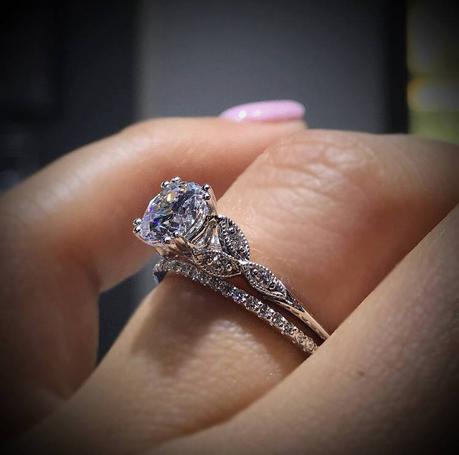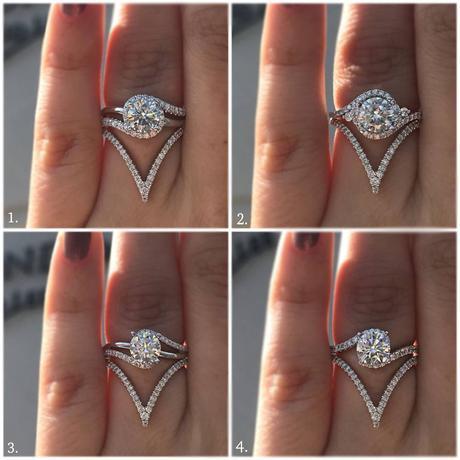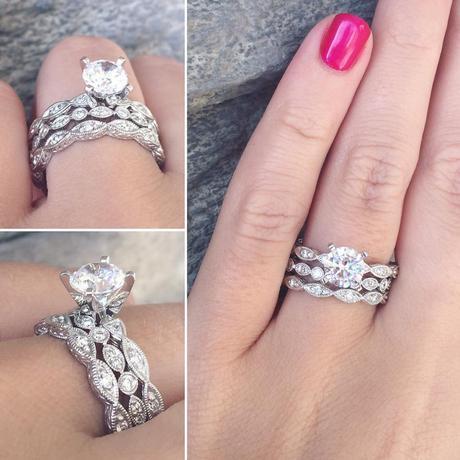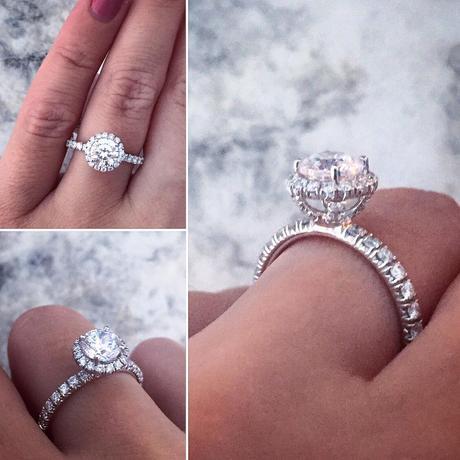In jewelry terminology a round brilliant diamond cut stone has multiple facets that give the stone maximum brilliance. A round brilliant cut looks somewhat like a geometric cone.

The first round brilliant cut was invented by Marcel Tolkowsky in 1919. Before the RB, there wasn’t a standard cut for round diamonds. Most were a mashup of rose cut, Old European or full cut diamond properties, and each cutter had his own particular style of slicing. When Tolkowsky published his thesis “RESEARCH ON THE ABRADING, GRINDING OR POLISHING OF DIAMOND,” he applied then-cutting-edge (lol) technology with his genetically inherited expertise. He eventually re-wrote the thesis for general publication (titled Diamond Design) and the rest was history. Cutters now had a scientifically proven formula for getting the most beauty out of a rough stone in a round brilliant shape. Today a round brilliant has 58 facets cut into two pyramids base to base, 33 on the crown and 25 on the base. (Check out diamond anatomy here.)

The connection between the crown angle and the pavilion angle have the greatest effect on what the diamond looks like. A steep crown can be counteracted by a shallow pavilion and vice versa. Now here is where we deviate in the use of the term “cut.” Cut can refer to a diamond’s shape, when used in a phrase like “OMG DID YOU SEE THAT AMAZEBALLS 6 CARAT ROUND BRILLIANT CUT???” Or it can refer to the Cut grade – one of the 4 C’s (and IMHO, the most important of the 4 C’s.)

Cut grades from GIA include Excellent, Very Good, Good, Fair, and Poor, and – like we discussed last week – those are the industry standard. Other labs use similar terminology, and you’ll find some proprietary diamond cut grades too. Like “Ideal Ideal cut” which is not any better or more special than a GIA Triple Excellent. But you can bet it’ll have a proprietary price tag.

For a round brilliant cut diamond, like with any diamond, you want to aim for the very best cut grade you can afford, sacrificing color, clarity and even carat weight so they align with your budget. There’s no point in a huge, flawless diamond that looks like flat glass – and that’s what happens when the Cut grade isn’t up to par. Luckily, because round brilliant is still the most in-demand diamond shape, you have plenty of options to choose from. Any diamond dealer will likely have hundreds in inventory and thousands a phone call away. And they’ll work with you to find the perfect fit for your taste and budget.

